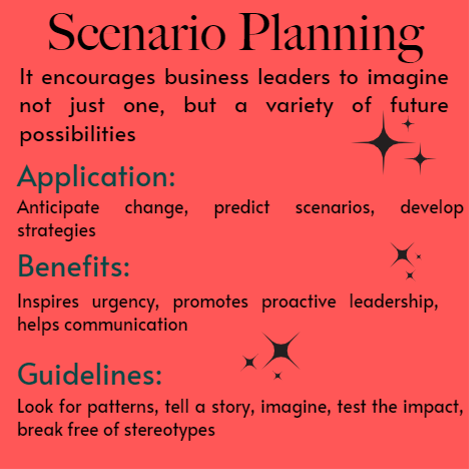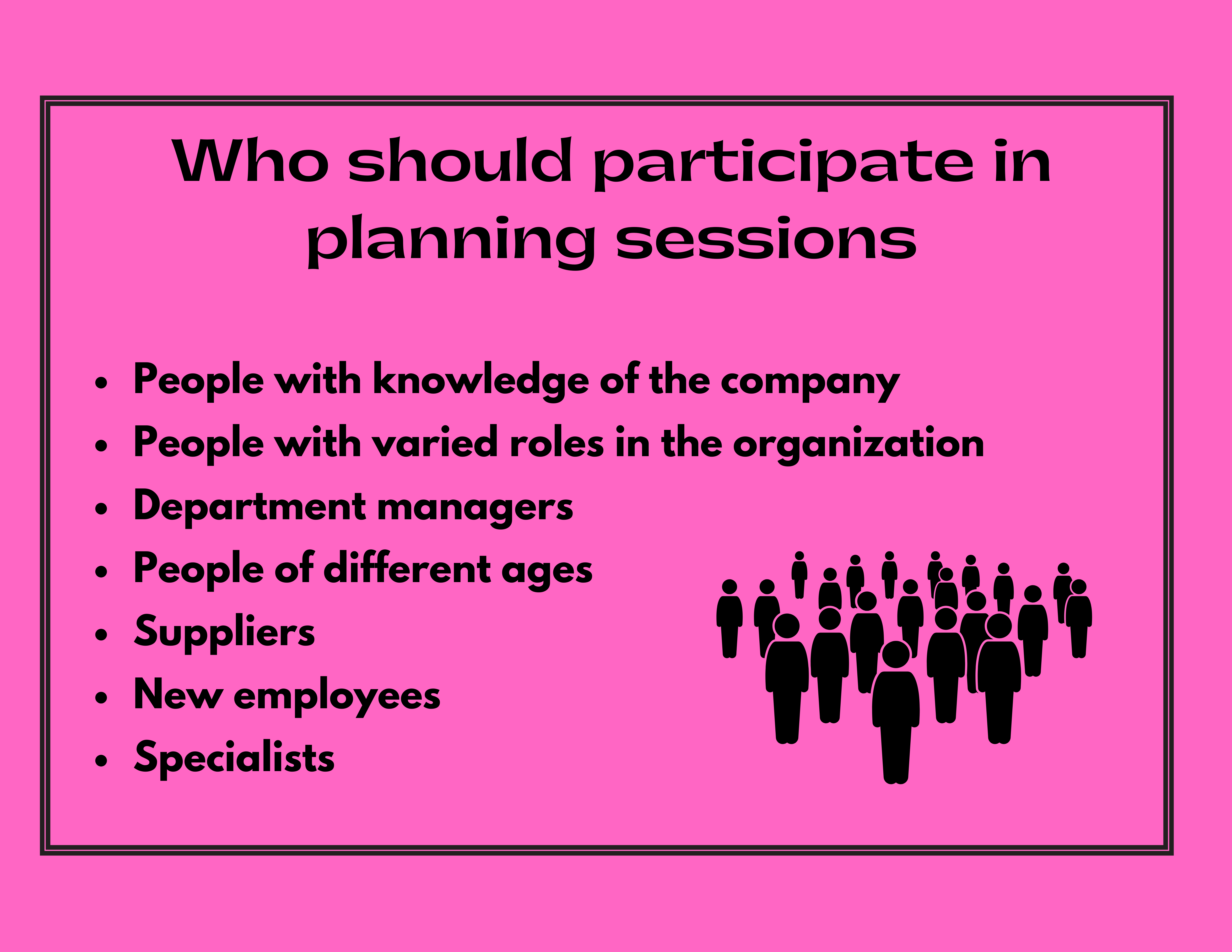
Scenario planning isn't the same thing as strategic planning. Basic strategic planning tends to address the accidents of the day, such as the decision to reduce inventory because of a downturn in the economy. Scenario planning looks at what's going to happen tomorrow. It's focused on understanding what the future will look like. Scenario planning encourages business leaders to imagine not just one, but a variety of future possibilities. Scenario planning is an outstanding way to learn about the future through a deeper understanding of the major driving forces affecting all of us today. In a group setting, executives engaged in scenario planning exchange knowledge and ideas, constructing a selection of "future stories" that expand their understanding of the current business environment and broaden their perception of future events.
"Driving forces," the most significant trends likely to affect the larger world, generally represent four categories:
Society - Demographics, lifestyle changes, etc.
Economics - Industry changes, competitive forces, changes in the workforce, etc.
Politics - Electoral, legislative, regulatory
Technology - Innovations, etc.
Within this overall grouping are predetermined elements (large-scale forces that are relatively stable and predictable, such as population demographics) and critical uncertainties (forces that we can't predict, such as natural disasters, shifts in consumer tastes, new products devised by the competition, and so on).
The goal in scenario planning isn't to create one specific future. Instead, by drawing attention to key drivers and exploring how they push the future in different directions, planners create an array of possible futures resulting in the ability to make crucial decisions today.
Scenario Planning: The Process
The basic approach in scenario planning is two-folded:
Know your core competencies. The starting point for any future thinking is knowing your strengths as they exist right now. Know as well your organization's strategic advantage in the marketplace.
Identify forces and trends. Has your company taken the time to seriously pinpoint forces that affect your financial performance - now and in years to come?
In some industries, the driving forces are obvious, for example, the dominant influence of political and environmental sentiments on the forest industry. In the coming years, what if the environmental lobby becomes stronger or, conversely, less influential?
Think about the Internet, which facilitates communication to and from any locality in the world. Now we don't need central meeting spaces any longer. How is your business different when all your customers and suppliers, as well as your competition, is in the same room and can talk to each other at the same time?
Guidelines for Constructing Scenarios
Look for patterns - As you devise different versions of the future, look for common threads and/or underlying similarities.
Tell a story - Convert apparently random scenarios into plausible, coherent stories.
Imagine, don't predict - Don't confuse scenarios with predictions.
Test the impact - What are the consequences for your company of each different scenario?
Break free of stereotypes - Use scenario planning to challenge inbred or conventional assumptions.
Define a timeframe for each scenario. Some events may occur in 20 years, and some in two. But we can't work with indefinite, open-ended scenarios.
The next step is determining how many scenarios to develop - one, three or five. Five is the ideal number, although the disadvantage is that this is expensive, complex and time-consuming. A smaller, agile company should pick three and get going.
Who Should Participate In These Planning Sessions?
Carefully selecting individuals who bring different assets to the process. This might include:

- People with a comprehensive knowledge of the company and its competitive environment.
- Men and women with varied roles inside the organization, particularly upper management.
- Department managers, especially those involved in research and development.
- People of different ages.
- Suppliers, strategic partners and major customers.
- Include new company employees as part of the scenario planning group, regardless of the positions they've been hired for. These people don't have preconceived notions of how things 'should' be done. Usually, they can be trusted to come up with provocative new ideas.
- Expanding the make-up of the team to include outside consultants and, when appropriate, industry specialists. These individuals provide a valuable objective view and don't come burdened with the "baggage" of being employed by the organization.
- What emerges is a range of choices that identify potential threats and opportunities - many of which might otherwise go unnoticed by company management focused obsessively on the organization's present-day situation.
Benefits of Scenario Planning
The goal of scenario planning is to open up the mind to until now unimaginable possibilities. While at the same time prompting business leaders to question their own basic assumptions about how the world really works.
As a result of imagining different scenarios, the organization can more readily recognize warning signs as they unfold. By rehearsing different versions of the future, business leaders are better prepared to handle new situations as they arise. They've already examined options for actions that offer effective strategies for the future. Other benefits of scenario planning:
- Inspires a sense of urgency about the future.
- Promotes proactive leadership initiatives.
- Offers a forum for CEOs and senior management to communicate their vision to different stakeholders.
By postulating different views of where your business is headed, you gain a sharper sense of the environment you're working in. It's a great way to avoid being overly conservative in your thinking. You don't want to limit your organization's potential in today's competitive marketplace.
Click here to view a video that explains scenario planning.
Pro-Active Steps Through Scenario Planning
Through scenario planning, a business can take these proactive steps:
- Identify internal and external factors currently affecting organizational performance.
- Draw company employees into a shared vision of the future.
- Devise contingency plans to respond appropriately to external changes.
- Challenge long-held internal beliefs.
- Incorporate the effects of change into long-range planning.
As a result of scenario planning, people within the company generally feel more confident about the future. There's less fear about what lies on the horizon. Instead, employees feel more empowered and flexible as events unfold around them.
Scenario Planning Application
Scenario planning is also useful for:
- Help anticipate change;
- Predict the elements of different scenarios and;
- Develop strategies to be able to shape the possible future.
Click here to view and download a scenario planning template that you can use when using the scenario planning method.